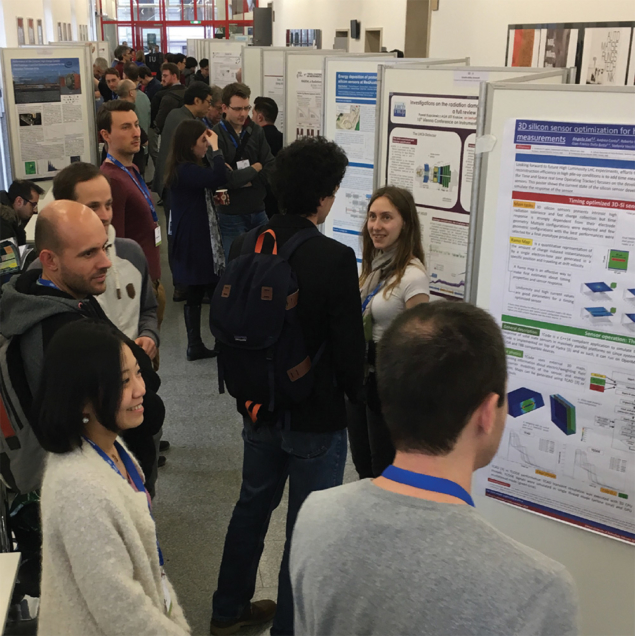
More than 300 experts convened from 18-22 February for the 15th Vienna Conference on Instrumentation to discuss ongoing R&D efforts and set future roadmaps for collaboration. “In 1978 we discussed wire chambers as the first electronic detectors, and now we have a large number of very different detector types with performances unimaginable at that time,” said Manfred Krammer, head of CERN’s experimental physics department, recalling the first conference of the triennial series. “In the long history of the field we have seen the importance of cross-fertilisation as developments for one specific experiment can catalyse progress in many fronts.”
Following this strong tradition, the conference covered fundamental and technological issues associated with the most advanced detector technologies as well as the value of knowledge transfer to other domains. Over five days, participants covered topics ranging from sensor types and fast and efficient electronics to cooling technologies and their mechanical structures.
Contributors highlighted experiments proposed in laboratories around the world, spanning gravitational-wave detectors, colliders, fixed-target experiments, dark-matter searches, and neutrino and astroparticle experiments. A number of talks covered upgrade activities for the LHC experiments ahead of LHC Run 3 and for the high-luminosity LHC. An overview of LIGO called for serious planning to ensure that future ground-based gravitational-wave detectors can be operational in the 2030s. Drawing a comparison between the observation of gravitational waves and the discovery of the Higgs boson, Christian Joram of CERN noted “Progress in experimental physics often relies on breakthroughs in instrumentation that lead to substantial gains in measurement accuracy, efficiency and speed, or even open completely new approaches.”
Beyond innovative ideas and cross-disciplinary collaboration, the development of new detector technologies calls for good planning of resources and times. The R&D programme for the current LHC upgrades was set out in 2006, and it is already timely to start preparing for the third long shutdown in 2023 and the High-Luminosity LHC. Meanwhile, the CLIC and Future Circular Collider studies are developing clear ideas of the future experimental challenges in tackling the next exploration frontier.





